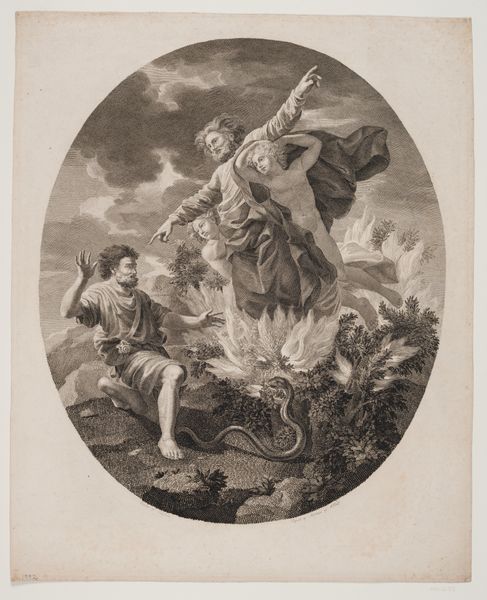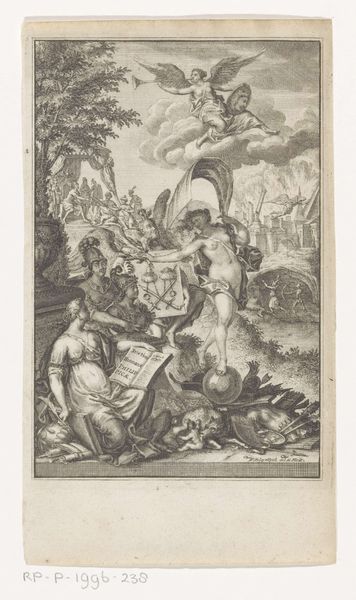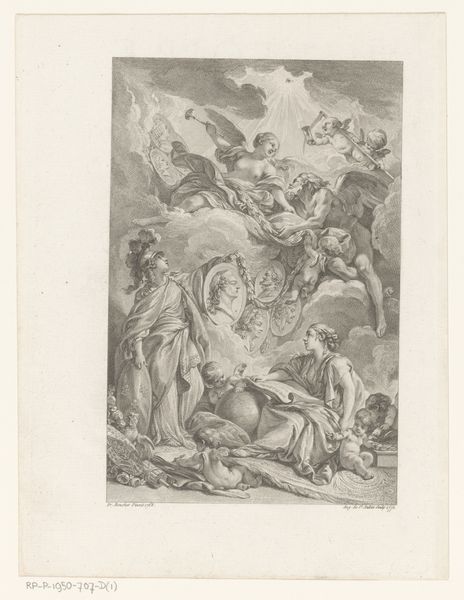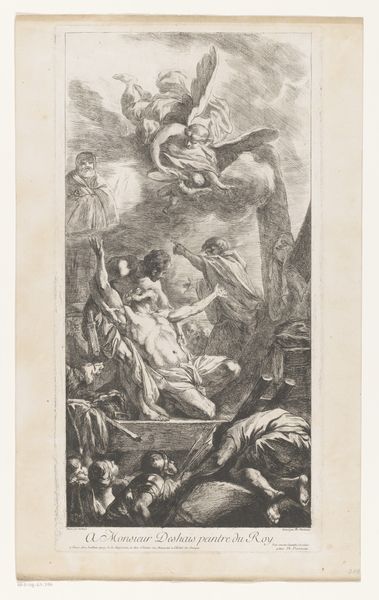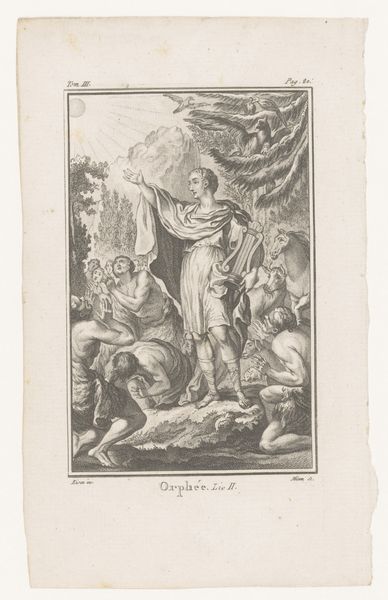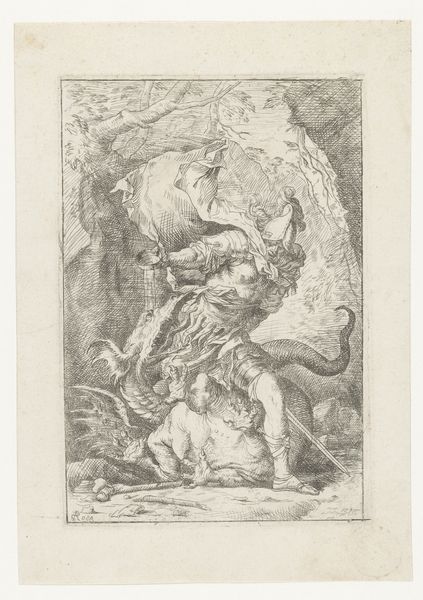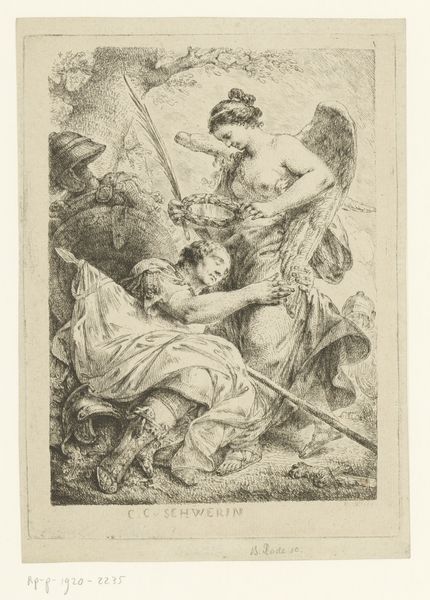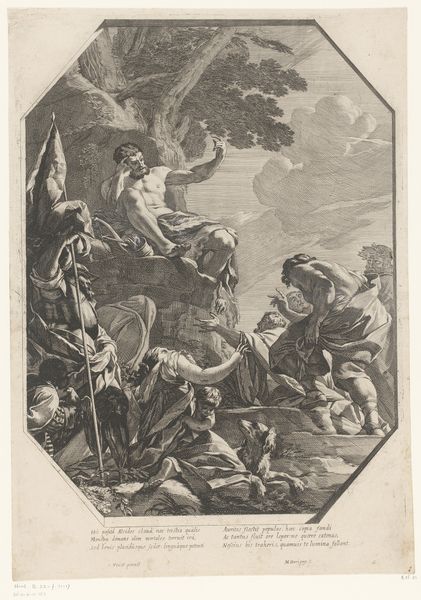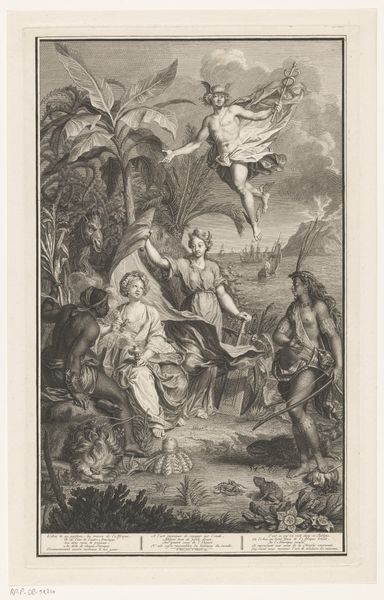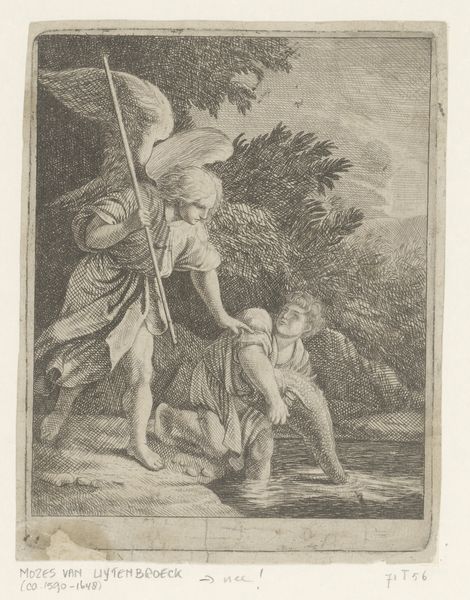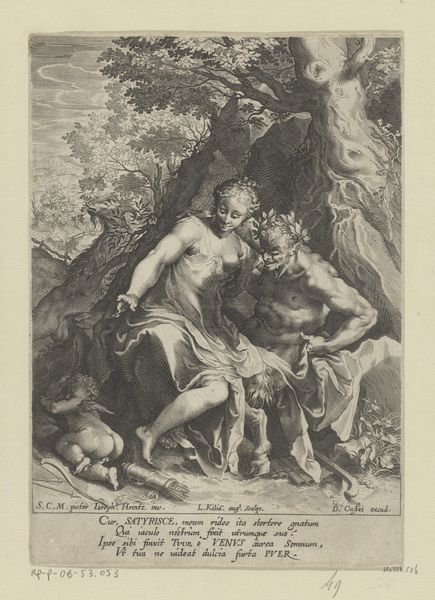
print, engraving
#
baroque
# print
#
history-painting
#
engraving
Dimensions: height 360 mm, width 229 mm
Copyright: Rijks Museum: Open Domain
Curator: Looking at this engraving, “The Sacrifice of Abraham,” dating roughly from 1698 to 1738, currently housed at the Rijksmuseum, what strikes you first? Editor: Oh, wow, it’s stark, isn't it? Almost like a photograph emerging from shadows. The contrast emphasizes the desperation of the scene, the way light catches on Isaac’s vulnerable form and Abraham's hesitant hand—it creates this charged, breathless atmosphere. A breath before horror or grace. Curator: Absolutely. And there's such dramatic intensity, typical of the baroque style, even in print form. The artist really captures that agonizing moment, doesn't it? Consider how depictions like this helped shape narratives of faith and obedience through the visual arts. Editor: Yes, but what does "obedience" mean here? Is it piety, or is it a dangerous abdication of ethical responsibility? Think about the power dynamics—a divine command overriding a father's natural love, and what that says about the supposed "naturalness" of patriarchy itself! The almost casual readiness of Abraham here makes it quite unsettling when read in the context of religious fanaticism, doesn’t it? The willingness to erase the self. Curator: I agree. The raw emotion and dramatic staging contribute to the baroque drama, no doubt. Editor: Right. That angel's almost theatrical descent, all billowing robes and urgent gesture...it highlights the external force intervening. The whole composition screams power and control! Curator: Indeed, power and control exerted in layers from above—sky, God, and, maybe most poignantly in an earthly sense, Abraham over his son. I am struck, as I often am with depictions of the story of Abraham and Isaac, about how the scene leaves so many questions hanging in the balance. Editor: It’s this feeling, the questions it triggers about faith, ethics, and power, that gives the print a haunting resonance, especially within current discussions of social injustice and oppressive systems. We're forced to confront these complexities—and it challenges our easy answers and comforts. Curator: It's funny; looking at art can be deeply uncomfortable and, at the same time, a reminder to stay engaged with the questions and doubts we feel deep in our bones. Editor: Exactly! If art can push us to examine power structures and our own roles within them, then it's doing more than just reflecting history—it's actively shaping our present and future.
Comments
No comments
Be the first to comment and join the conversation on the ultimate creative platform.

